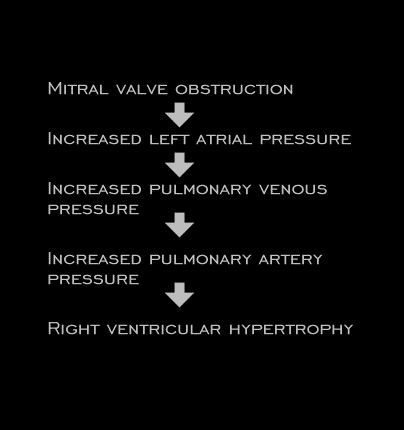
Obstruction at the mitral valve level causes an increase in left atrial pressure that results in obligatory increases in pulmonary venous, pulmonary artery and right ventricular systolic pressures which result in right ventricular hypertrophy. As the obstruction becomes more severe, the magnitude of the pulmonary hypertension increases and the ECG changes progress to more closely resemble those demonstrated earlier in the patients with severe right ventricular systolic hypertension.
